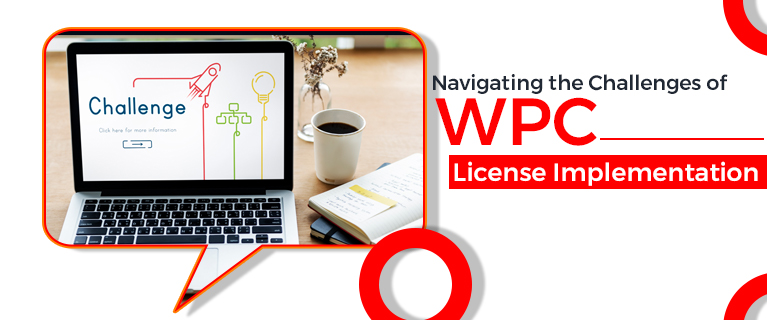Significance Of WPC License In India
In today's fast-paced world, wireless communication plays a pivotal role in connecting people, businesses, and technologies. From smartphones and tablets to Wi-Fi routers and satellite communication systems, wireless devices have become an integral part of our daily lives. However, to ensure smooth and interference-free communication, the Indian government mandates the issuance of a Wireless Planning and Coordination (WPC) License. This blog explores the significance of the WPC License in India and its crucial role in empowering wireless communications.
Understanding the WPC License
The Wireless Planning and Coordination (WPC) wing of the Ministry of Communications, Government of India, is responsible for regulating the use of the radio frequency spectrum and the allocation of scarce resources for wireless communication. The WPC License is a legal document that authorizes individuals, businesses, and organizations to operate radio frequency equipment and wireless devices within specified frequency bands.
Key Areas of Significance
The WPC License holds immense significance in various domains , contributing to the efficient and seamless functioning of wireless communications in India. Let's explore its key areas of importance:
1. Regulating Radio Spectrum:
The WPC License ensures that the allocation and utilization of the radio frequency spectrum are well-coordinated and managed to prevent interference and congestion.
2. Enabling Wireless Connectivity:
The WPC License facilitates the deployment of wireless networks, including cellular networks, Wi-Fi hotspots, and satellite communication systems. It plays a vital role in expanding the reach of wireless connectivity to even remote and underserved areas.
3. Ensuring Interference-Free Communication:
By regulating the use of radio frequencies, the WPC License prevents interference between different wireless networks and devices. This interference-free communication is essential for maintaining the reliability and quality of wireless services.
4. Supporting IoT and M2M Technologies:
With the advent of the Internet of Things (IoT) and Machine-to-Machine (M2M) technologies, the demand for wireless connectivity has surged. The WPC License supports the deployment of these technologies and fosters innovation in various industries.
5. Enhancing National Security:
The WPC License plays a crucial role in ensuring the security of wireless communication networks. It enables the government to monitor and regulate the use of wireless devices to safeguard national security interests.
6. Facilitating Innovation and Growth:
With the WPC License, businesses and entrepreneurs have the opportunity to innovate and develop new wireless technologies and services. This fosters competition and drives growth in the wireless communication sector.
Read Also This - WPC Certification Procedure and Requirements for Wireless SpeakersTypes of WPC License
The WPC License encompasses various categories, depending on the type of wireless communication equipment and frequency bands used. Some common types of WPC Licenses include:
1. Network License:
Issued to telecom operators and service providers for operating wireless networks, such as cellular networks and Wi-Fi hotspots.
2. Amateur Radio License:
Granted to amateur radio enthusiasts for non-commercial radio communication.
3. Restricted Operator's License (ROL):
Required for individuals operating certain radio equipment, such as marine radio operators.
4. Dealership License:
Mandatory for businesses engaged in the import and sale of wireless devices and equipment.
5. Earth Station License:
Issued for the establishment and operation of satellite earth stations for communication purposes.
6. Experimental License:
Granted for conducting experimental research and development in the wireless communication domain.
Read Also This - How WPC License Expands Your Radio Equipment BusinessObtaining a WPC License
Obtaining a WPC License involves a systematic application process and adherence to the guidelines laid down by the WPC wing. The process typically includes:
1. Filing the Application:
Applicants must submit a detailed application with all necessary documents and information related to the wireless equipment or service they intend to operate.
2. Frequency Allocation and Clearance:
The WPC wing evaluates the application, allocates the appropriate frequency spectrum, and ensures that it does not interfere with existing services.
3. Technical and Security Compliance:
The application is scrutinized for technical compliance, adherence to security norms, and compatibility with other wireless services.
4. License Issuance:
Upon successful verification and compliance, the WPC License is issued to the applicant, authorizing them to operate the specified wireless communication equipment.
Read Also This - Understanding the Importance of WPC License for Radio Equipment in IndiaConclusion
The WPC License is a critical instrument in ensuring the efficient and organized use of radio frequency spectrum for wireless communication in India. By regulating wireless networks and devices, the WPC License promotes seamless connectivity, prevents interference, and enhances the security and reliability of wireless services. It empowers businesses, individuals, and organizations to harness the power of wireless communication for innovation, growth, and socio-economic development. Embracing the significance of the WPC License in India is pivotal in unlocking the full potential of wireless technology and ushering India into a connected and digitally empowered future.




Comments
Post a Comment